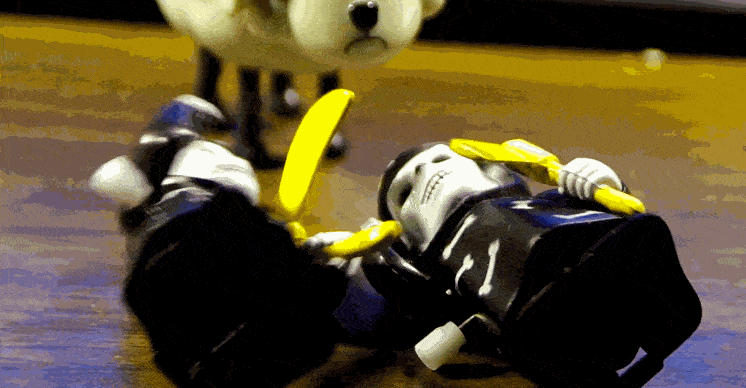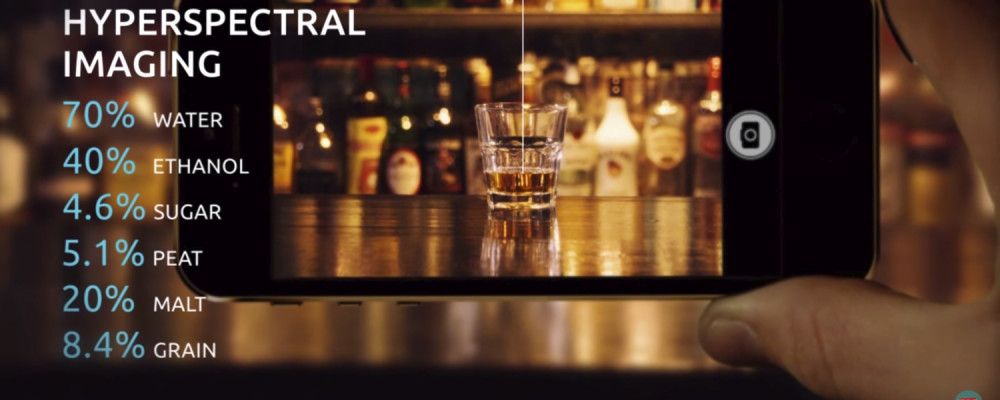Lewis Dartnell | AEON
“Given the dwindling reserves of crude oil left in the world, it could be argued that the most wasteful use for this limited resource is to simply burn it. We should be carefully preserving what’s left for the vital repertoire of valuable organic compounds it offers.” Read more
Is Immortality GOOD or BAD?
Posted in ethics, life extension
Vicki Turk & Brian Anderson | Motherboard
“That’s another basic thing that the doom-and-gloom, death-is-preferable-to-the-future crowd seem to misunderstand. The world won’t just stay the same, with everyone trudging along in a state of boredom; it’ll keep changing. There’ll be new stuff to do because we’ll keep making new stuff. We’ll get those jetpacks we were promised, and that’s just the start.” Read more
Robert Szczerba | The Next Web
“The advancement of technology generally evokes a range of emotions in people from all walks of life. Some view technology as a great evil that slowly diminishes our humanity, while others view it as a way to bring the world closer together and to help solve some of our greatest challenges.” Read more
Steve Lohr | The New York Times

“The company and its partners say that technology, economics and policy changes are coming together to improve the odds of making the IBM venture a workable reality. They point to improvements in artificial intelligence, low-cost cloud computing and health policy that will reward keeping patients healthy instead of the fee-for-service model in which more treatments and procedures mean more revenue.” Read more
Angela Watercutter - Wired
As expected, writer/director J.J. Abrams didn’t show up empty-handed to Star Wars Celebration—and not just because he sent pizza to everyone waiting in line in Anaheim. He also came with a new teaser for Star Wars: The Force Awakens. Read more
Game-changing technologies can be a waste of money or a competitive advantage. It depends on the technology and the organization.
It seems like the term “game-changing” gets tossed around a lot lately. This is particularly true with respect to new technologies. But what does the term mean, what are the implications, and how can you measure it?
With regarding to what it means, I like the MacMillan dictionary definition for game-changing. It is defined as “Completely changing the way that something is done, thought about, or made.” The reason I like this definition is it captures the transformational nature of what springs to mind when I hear the term game-changing. This should be just what it says. Not just a whole new ball game, but a whole new type of game entirely.
Every industry is unique. What is a game-changer for one, might only be a minor disruption or improvement for another. For example, the internal combustion engine was a game-changer for the transportation industry. It was important, though less of a game-changer for the asphalt industry due to secondary effect of increased demand for paved roads.
Just as every industry is unique, so is every organization. In order to prosper in a dynamic environment, an organization must be able to evaluate how a particular technology will affect its strategic goals, as well as its current operations. For this to happen, an organization’s leadership must have a clear understanding of itself and the environment in which it is operating. While this seems obvious, for large complex organizations, it may not be as easy as it sounds.
In addition to organizational awareness, leadership must have the inclination and ability to run scenarios of how it the organization be affected by the candidate game-changer. These scenarios provides the ability to peek a little into the future, and enables leadership to examine different aspects of the potential game-changer’s immediate and secondary impacts.
Now there are a lot of potential game-changers out there, and it is probably not possible to run a full evaluation on all of them. Here is where an initial screening comes in useful. An initial screen might ask is it realistic, actionable, and scalable? Realistic means does it appear to be feasible from a technical and financial standpoint? Actionable means does this seem like something that can actually be produced? Scalable means will the infrastructure support rapid adoption? If a potentially transformational technology passes this initial screening, then its impact on the organization should be thoroughly evaluated.
Let’s run an example with augmented reality as the technology and a space launch services company. Despite the (temporary?) demise of Google Glass, augmented reality certainly seems to have the potential to be transformational. It literally changes how we can look at the world! Is it realistic? I would say yes, the technology is almost there, as evidenced by Google Glass and Microsoft HoloLens. Is it actionable? Again, yes. Google Glass was indeed produced. Is it scalable? The infrastructure seems available to support widespread adoption, but the market readiness is a bit of an issue. So yes, but perhaps with qualifications.
With the initial screening done, let’s look at the organizational impact. A space launch company’s leadership knows that due to the unforgiving nature of spaceflight, reliability has to be high. They also know that they need to keep costs low in order to be competitive. Inspection of parts and assembly is expensive but necessary in order to maintain high reliability. With this abbreviated information as the organizational background, it’s time to look at scenarios. This is the “What if?” part of the process. Taking into account the known process areas of the company and the known and projected capabilities of the technology in question, ask “what would happen if we applied this technology?” Don’t forget to try to look for second order effects as well.
One obvious scenario for the space launch company would be to examine what if augmented reality was used in the inspection and verification process? One could imagine an assembly worker equipped with augmented reality glasses seeing the supply chain history of every part that is being worked on. Perhaps getting artificial intelligence expert guidance during assembly. The immediate effect would be reduced inspection time which equates to cost savings and increased reliability. A second order effect could be greater market share due to a better competitive advantage.
The bottom line is this hypothetical example is that for the space launch company, augmented reality stands a good chance of greatly improving how it does business. It would be a game-changer in at least one area of operations, but wouldn’t completely re-write all the rules.
As the company runs additional scenarios and visualizes the potential, it could determine whether or not this technology is something they want to just wait and see, or be an early adopter, or perhaps directly invest in to bring it along a little bit faster.
The key to all of this is that organizations have to be vigilant in knowing what new technologies and capabilities are on the horizon, and proactive in evaluating how they will be affected by them. If something can be done, it will be done, and if one organization doesn’t use it to create a competitive advantage, rest assured its competitors will.
By Sarah Jenn — NewsBTC
In a step closer towards the institutionalization of bitcoin trading, a New York firm announced that it is expanding its operations to include trading in blocks of bitcoin. Genesis Trading, a division of SecondMarket, says that it is currently the only licensed broker-dealer that offers this service.
Genesis is now specializing its operations to focus on bitcoin trading with its own team of traders and support staff. According to its Chief Executive Brendan O’Connor, their plan is to generate business from the hedge funds and private investors who have shown an interest in the cryptocurrency. Read more
By Jason Dorrier — SingularityHub
Our smartphones can do a lot—compute, pin down our location, sense motion and orientation, send and receive wireless signals, take photographs and video. What if you could also learn exactly what chemical components were present in any object? A new invention out of Israel aims to enable just that.
“The tricorder is no longer science fiction,” a recent Tel Aviv University (TAU) article declared. While a number devices in recent years have inspired similar comparisons, maybe this one is a little closer. Read more

As you fall feet first across an event horizon—the point where nothing can escape the black hole’s gravitational pull—you don’t feel anything change. But eventually, gravity is so much stronger at your feet than your head that you’re stretched apart, like Play-Doh, until you snap. Or at least, that’s the picture physicists drew after Einstein proposed his theory of general relativity in 1915. In the past few years, new possibilities for your untimely end have emerged.
The thought experiments attempt to resolve a paradox that physicist Stephen Hawking outlined in the 1970s. He showed that in their current forms, the two major pillars of physics—quantum mechanics and general relativity—can’t both be true near a black hole. General relativity governs how very massive objects work, while quantum mechanics governs how very tiny objects work. In most of the universe, physicists can choose which set of rules to apply—general relativity for a galaxy cluster, quantum mechanics for a particle accelerator—but a black hole is both very massive and very small. Read more
— Gizmodo

There’s been a lot of talk lately about how spider silk is this crazy wonder material that may soon find its way into everything from electronics to ultra-strong fabrics. Now, there’s another reason to be excited about spider silk: doctors might one day use the stuff to grow you a new heart.
Growing new organs and tissues outside the body is the bleeding edge of biomedical research. Just imagine: if doctors could grow replacement hearts or kidneys from a patient’s own stem cells, that patient would no longer have to face the agonizing prospect of waiting to find a suitable donor. The risk of organ rejection would become nil. But there’s a lot of R&D to be done before we get there. One initial challenge has been finding a scaffold material to grow organ tissues on—something that’s non-toxic, will not impede cell growth, and will not, itself, be rejected by the body. That, it turns out, is a pretty tall order. Read more
